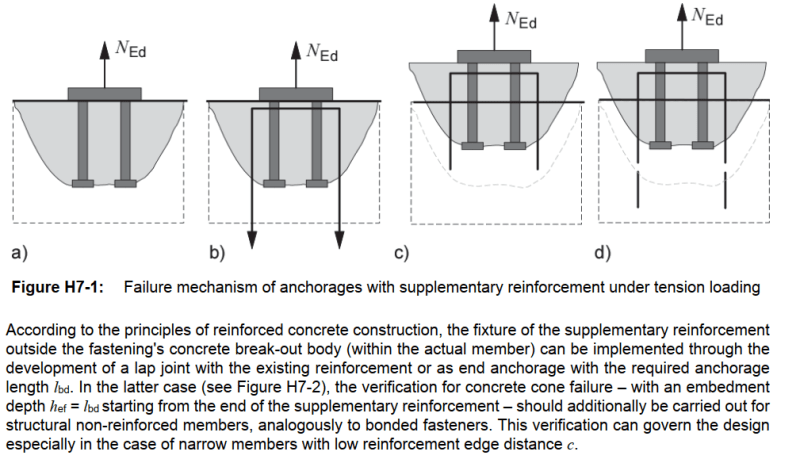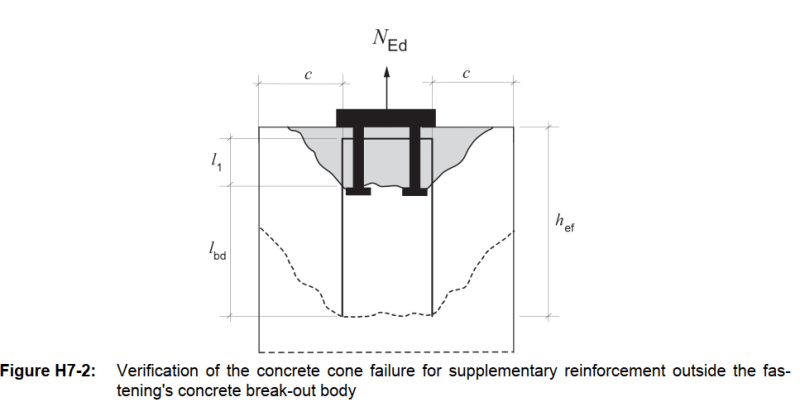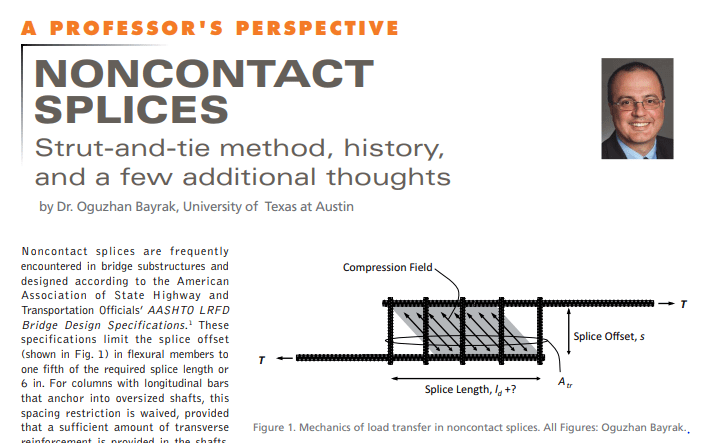Hi everyone - I've done quite a bit of research on this forum about the topic I'm about to write about, but would appreciate others' advice on the matter.
As the subject reads, this is to do with anchor reinforcement. I'm currently working on a project where we are anchoring a bollard into a concrete beam with M56 anchors (big tension forces!). The project is located in Europe, so we are designing to Eurocode 2, Part 4. In principle, EC2-4 is equivalent to Chapter 17 of ACI 318-19.
Due to constraints with the geometry of the beam, I cannot mobilise a big enough concrete cone to resist the applied tension, therefore I am forced to use supplementary reinforcement (or anchor reinforcement, as defined in ACI). However, the bigger concrete cone projecting from the bottom of the supplementary reinforcement is still too small, so I'm looking to see what would be the best mechanism (if any), to transfer the tension into the main reinforcement in the beam. EC2-4 states that the bigger concrete breakout check can be precluded if this is achieved:

I guess my question boils down to: what do people here understand as "adequate lapping" in the context of this failure mechanism?
Bonus: I suspect I'll have to follow a similar approach with edge breakout due to shear.
Thank you!
Edit:
The following snippets are taken from the "Commentary to EN 1992-4" by the German Committee for Structural Concrete. You'll see that a reference to "a lap joint with existing reinforcement" is made:


As the subject reads, this is to do with anchor reinforcement. I'm currently working on a project where we are anchoring a bollard into a concrete beam with M56 anchors (big tension forces!). The project is located in Europe, so we are designing to Eurocode 2, Part 4. In principle, EC2-4 is equivalent to Chapter 17 of ACI 318-19.
Due to constraints with the geometry of the beam, I cannot mobilise a big enough concrete cone to resist the applied tension, therefore I am forced to use supplementary reinforcement (or anchor reinforcement, as defined in ACI). However, the bigger concrete cone projecting from the bottom of the supplementary reinforcement is still too small, so I'm looking to see what would be the best mechanism (if any), to transfer the tension into the main reinforcement in the beam. EC2-4 states that the bigger concrete breakout check can be precluded if this is achieved:

I guess my question boils down to: what do people here understand as "adequate lapping" in the context of this failure mechanism?
Bonus: I suspect I'll have to follow a similar approach with edge breakout due to shear.
Thank you!
Edit:
The following snippets are taken from the "Commentary to EN 1992-4" by the German Committee for Structural Concrete. You'll see that a reference to "a lap joint with existing reinforcement" is made:



